
converting an old business site
The site is located within a vast industrial reconversion area of 120 ha, strategic for the Lille metropolis. The Plan Bleu carried by the European Metropolis of Lille (MEL) defined the main orientations aiming at the partial land restoration of the area by the connection of a natural river, the Marque, to a backwater of the canal system, la branche de Croix.
Initially, the study carried out in 2012 by ANMA as part of the Intense City approach, initiated by the MEL, focused on a first sector of 50 ha east of rue Jean Jaurès at the interface of the communes of Croix and Villeneuve d’Ascq on which the 3Suisses group was largely located.
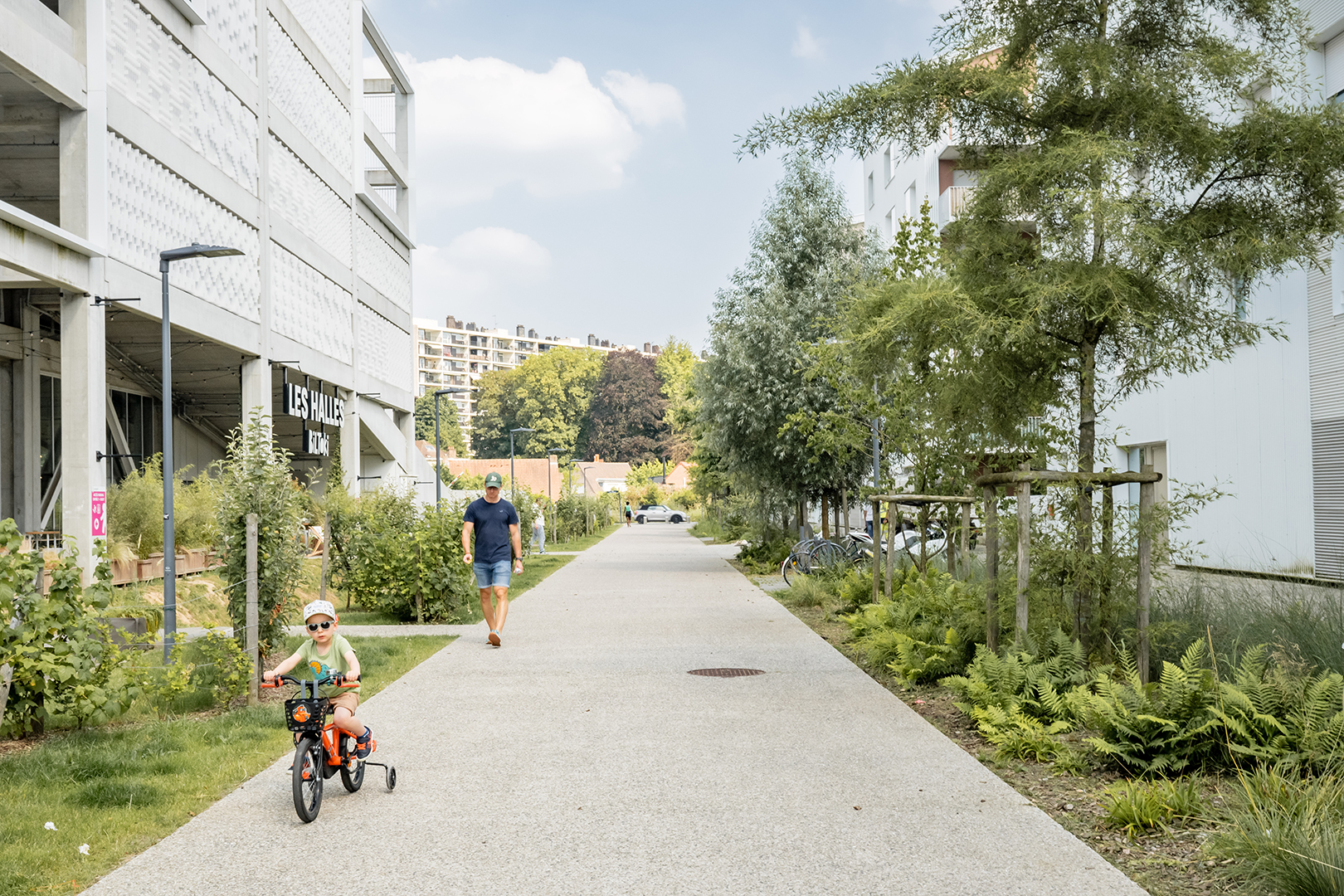
a mixed-use neighborhood
with a focus on housing
The departure of the logistics activity of the 3 Suisses group, initially freeing up 10ha in the heart of a new part of town to be reinvented, enabled ANMA to then develop, as chief town planner, an urban project on behalf of the group. 3 Suisses associated with Linkcity: the Maillerie. After a Planning Permit issued in 2017, the project is now in the operational phase and managed by Linkcity in cooperation with Nodi.
This urban redevelopment project for the logistics site aims to create a mixed neighborhood predominantly residential and halfway between the towns of Croix and Villeneuve d´Ascq. The site layout is based on five invariants.

park
bords de marque
On the eastern and northern fringes, the project takes advantage of the Plan Bleu opportunity to reconnect la Branche de Croix to la Marque through a large linear park on the edges of the Marque. It frees up the necessary hold to allow MEL, in a second step, to ensure the contracting authority of a new urban park around the reopened small Marque.
It creates a large green space in continuity with the wooded areas of the horse club and the Flandres residence. Promoting visual openings, the city’s access on the water will thus create a new urban front, giving the neighborhood a strong identity.

path
structuring
In the central part, a north-south pedestrian alley replaces the existing building. A structuring axis of the new district, it provides access to the various related programs. It widens at the heart of the project to become a place of centrality and animation for the new district.
Real backbone of the urban project and support of active modes, this alley is intended to be extended beyond the Flers district, to the south towards the Jean Jaurès school group and to the north to the metro station and to downtown Croix in order to irrigate the whole neighborhood.
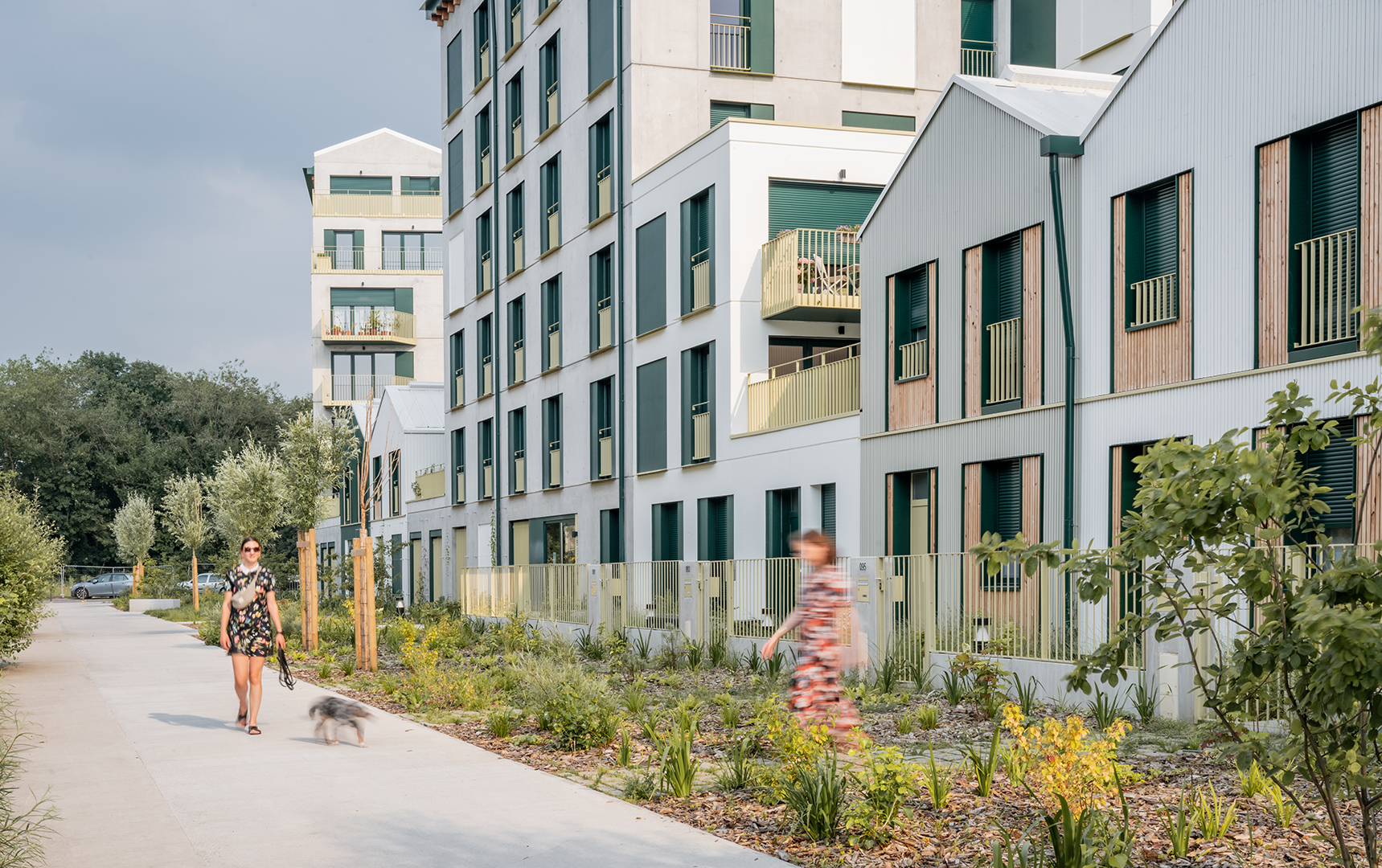
courses
urban
On the western fringe, rue Jean Jaurès is punctuated by active urban courtyards – offices, nursing homes, etc. -, front doors to the heart of the district.
This system of “active” courtyards reinforces the rue Jean Jaurès in its function as an economic axis connecting the two polarities of downtown Croix and the district of Flers-Breucq.
cross-cutting paths
Perpendicular to the three axes (Park, Driveway, Street), transverse landscaped paths serve the buildings. These pedestrian paths, with the exception of the new road which, from rue Jean Jaurès, provides access to the new district up to avenue Le Nôtre.
They make it possible to integrate and link the future Parc des Bordes de Marques to the green network of the greater territory.
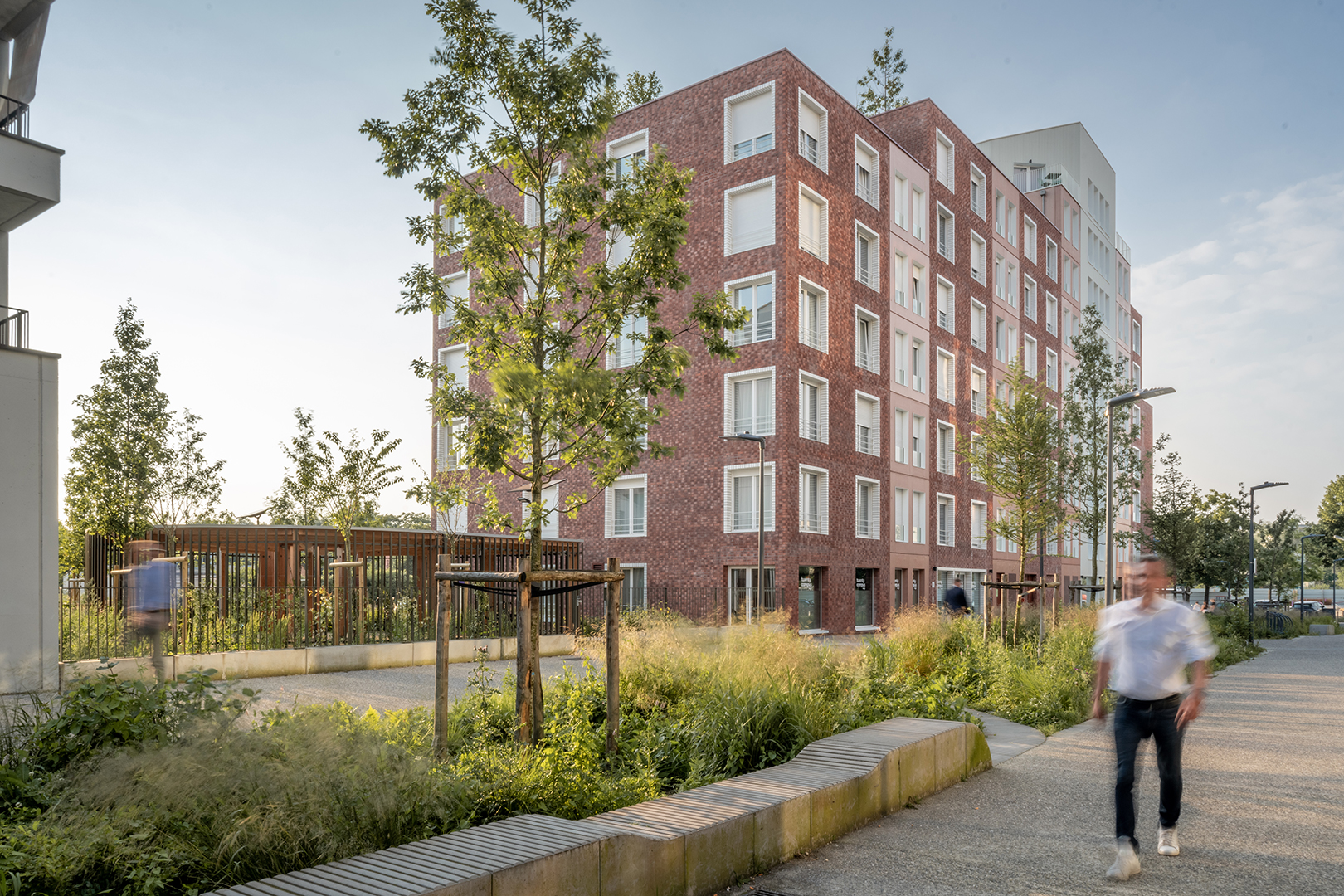
a project
that comes from the site
The project tends to revisit in a contemporary way what makes the identity of the area: a suburb fabric combining both different types of housing – from townhouses to dense collective buildings – and various activities – from the “active” ground floors integrated into residential buildings and office buildings.
The buildings thus have various sizes and develop a roofing vocabulary. Views of the grand landscape and the blocks’ gardens are stimulated. Along the Avenue Le Nôtre and the Rue Jean Jaurès, the constructions will reconstitute the built facades in the extension of the neighboring buildings to promote the urban seam with the neighborhood.
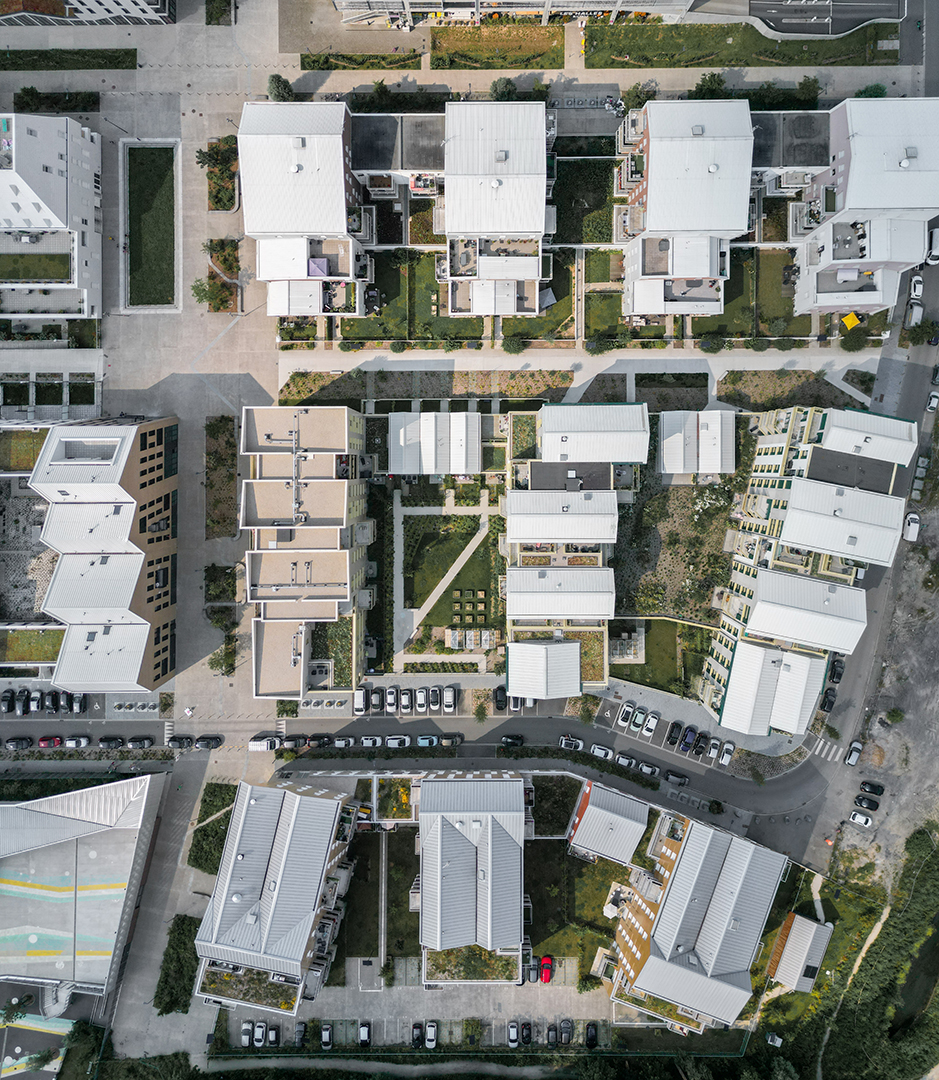
a neighborhood of what is already there
The project also draws on the potential of existing buildings to offer a neighborhood melting in the “already there”. Some existing buildings thus fit naturally into the new urban fabric. The large volume of the so-called “Compact” logistics building benefits from a relatively flexible concrete column-beam structure. It therefore constituted an opportunity for reconversion to be seized. Restructured, (the last two levels are demolished and the building will be thinner) it will thus fit better with the neighboring lower buildings. It will accommodate shops and activities in the ground flour (including a gourmet hall), a large multi-story car park on the floors, as well as office spaces along the main aisle.
Reminiscent of the industrial past of the sector, the brick buildings around the courtyard of the Cidal in the southwest of the district are also preserved and accommodate the Maison du Projet de la Maillerie and various activities: offices of the operator Nodi but also exhibition hall, tavern, collective laundromat, etc.
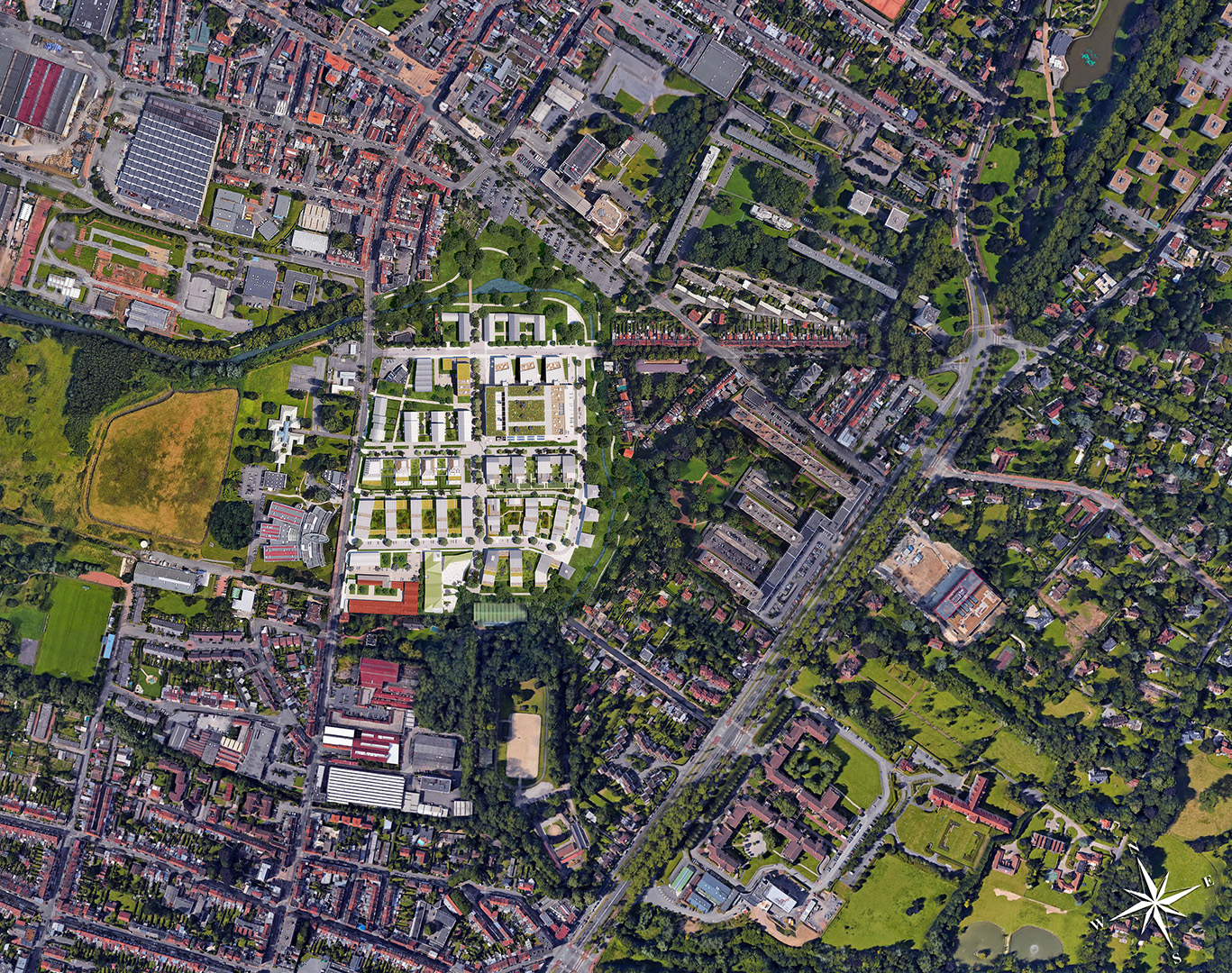
PROJECT TEAM
PROJECT MANAGEMENT
Urban planner: ANMA
COMPETITION
Olivier Calvarese
ARCHITECTURAL STUDIES
Olivier Calvarese
Aurélie Perrin
Clémentine de Sorbay
URBAN STUDIES
Nicolas Saugère
CHANTIER
Antonio Esteves
LANDSCAPE
Jérôme Touzé
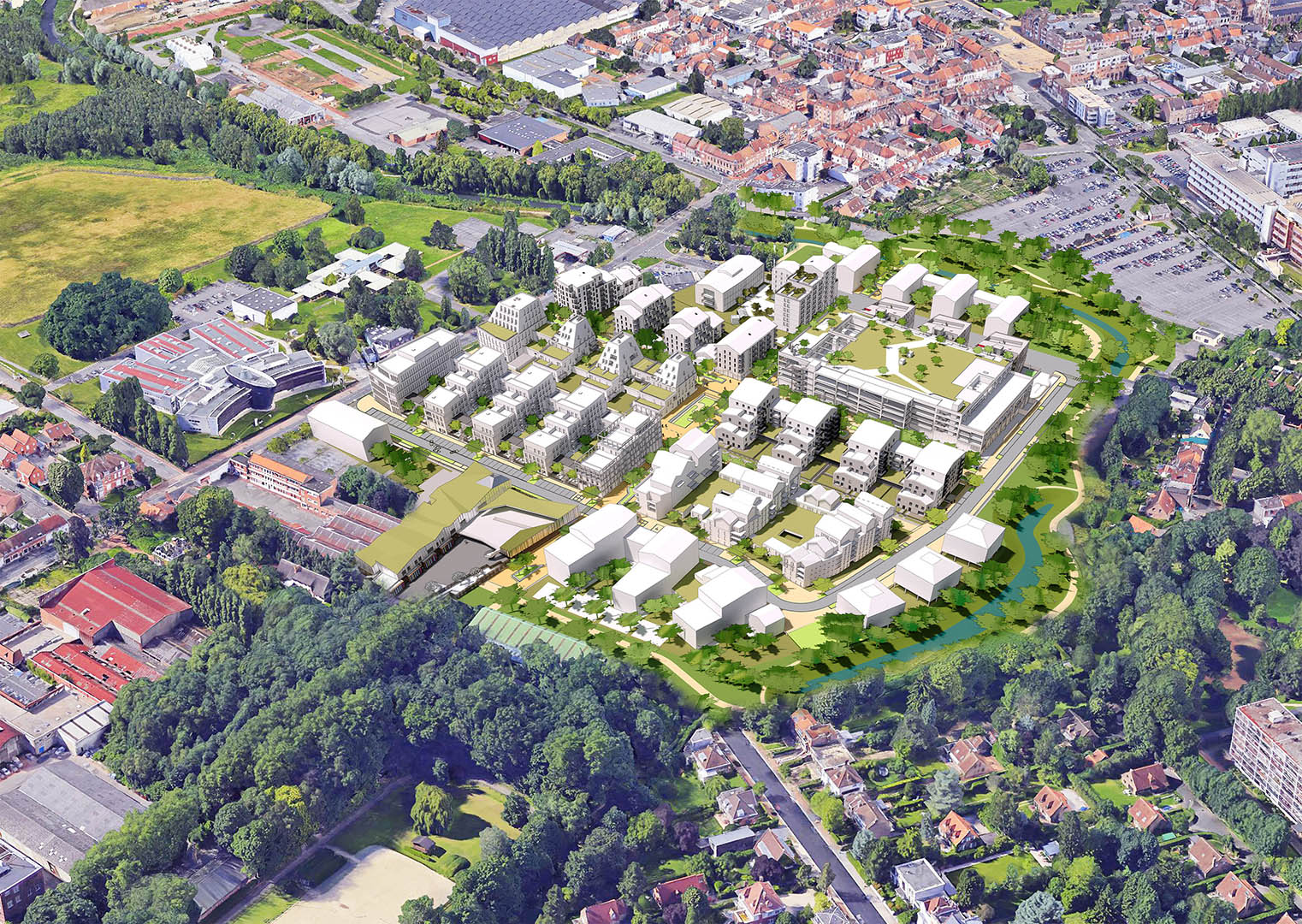
TECHNICAL SHEET
STATUSOperational phase
COMMISSIONED BY, ARGOSYN
DELIVERY 2017
SURFACE Site 10 ha – 88 000 m² SP
PHOTOGRAPHY Nicolas Grosmond
GRAPHICS PLAN Justine Roux
SEE +
Saint-André-lez-Lille, Quai 22
Saint-Denis, Confluence Néaucité
Villeneuve d’Ascq, Seniors and Housing Residence
